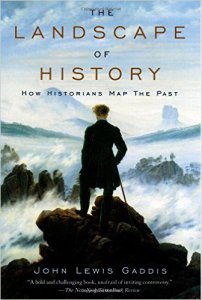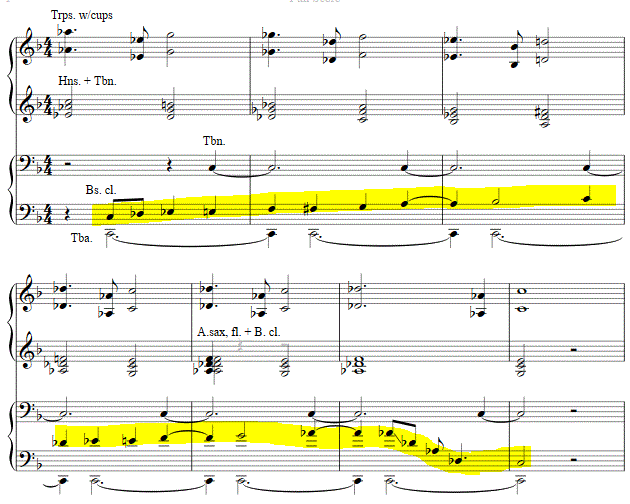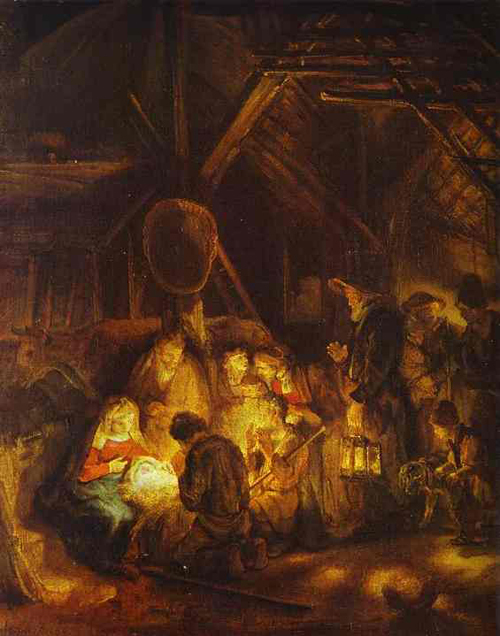 Recently I have been reading John Lewis Gaddis’ excellent work, The Landscape of History, and Gaddis helpfully addresses both the purpose of studying history and the method of the historian. The responsibility of each subject to justify itself in the curriculum is perhaps inevitable, but history seems often to be one that requires the most questioning, even in classical Christian education. The justifying answer most often given is that we learn about the past so that we won’t repeat it in the future. But I, at least, have never been satisfied by this answer, yet I have remained a firm defender of the value of learning and knowing history. Gaddis provides a much better definition, I think, of the historian’s task:
Recently I have been reading John Lewis Gaddis’ excellent work, The Landscape of History, and Gaddis helpfully addresses both the purpose of studying history and the method of the historian. The responsibility of each subject to justify itself in the curriculum is perhaps inevitable, but history seems often to be one that requires the most questioning, even in classical Christian education. The justifying answer most often given is that we learn about the past so that we won’t repeat it in the future. But I, at least, have never been satisfied by this answer, yet I have remained a firm defender of the value of learning and knowing history. Gaddis provides a much better definition, I think, of the historian’s task:
“It is to interpret the past for the purposes of the present with a view to managing the future, but to do so without suspending the capacity to assess the particular circumstances in which one might have to act, or the relevance of past actions to them. To accumulate experience is not to endorse its automatic application, for part of the historical consciousness is the ability to see differences as well as similarities.”[1],[2]
In discussing this purpose of history, Gaddis provides several illustrations. One illustration is that of sports.[3] Gaddis suggests that knowing the grammar of history, that is, the content of past events, merely gives us the rules of the game; yet each game, although played by the same rules, presents its own unique context in which we apply our own skills in conjunction with the knowledge of the rules to perform to our maximum ability. Gaddis suggests that the “fascination of sports resides in the intersection of the general with the particular.”[4]
 A second illustration is a comparison and contrast of Jan van Eyck’s The Marriage of Giovanni Arnolfini and Picasso’s The Lovers. These two paintings, although depicting the same subject, are radically different with respect to context. In van Eyck’s painting, every detail is depicted precisely, thus contextualizing this couple in a specific place and time. Picasso’s work, however, strips the couple of everything (including clothing, hence my decision not to post the picture here), thus allowing the absence of context to universalize (or generalize) this couple and thus project it easily across time and space.[5]
A second illustration is a comparison and contrast of Jan van Eyck’s The Marriage of Giovanni Arnolfini and Picasso’s The Lovers. These two paintings, although depicting the same subject, are radically different with respect to context. In van Eyck’s painting, every detail is depicted precisely, thus contextualizing this couple in a specific place and time. Picasso’s work, however, strips the couple of everything (including clothing, hence my decision not to post the picture here), thus allowing the absence of context to universalize (or generalize) this couple and thus project it easily across time and space.[5]
The third illustration is one that begins and ends Gaddis’ introductory chapter and intentionally serves as the cover of the book: Friedrich’s Wanderer. This painting, according to Gaddis, suggests “visually what historical consciousness is all about” and thus serves as an excellent illustration of the historian’s task.[6] Gaddis writes:
 “The back turned toward us. Elevation from, not immersion in, a distant landscape. The tension between significance and insignificance, the way you feel both large and small at the same time. The polarities of generalization and particularization, the gap between abstract and literal representation. But there’s something else here as well: a sense of curiosity mixed with awe mixed with a determination to find things out—to penetrate the fog, to distill experience, to depict reality—that is as much an artistic vision as a scientific sensibility.”[7]
“The back turned toward us. Elevation from, not immersion in, a distant landscape. The tension between significance and insignificance, the way you feel both large and small at the same time. The polarities of generalization and particularization, the gap between abstract and literal representation. But there’s something else here as well: a sense of curiosity mixed with awe mixed with a determination to find things out—to penetrate the fog, to distill experience, to depict reality—that is as much an artistic vision as a scientific sensibility.”[7]
Gaddis concludes his introductory chapter, then, with the suggestion that historians are not, despite common belief, meant to be “dispassionate chroniclers of events” but should instead bring a “sense of excitement and wonder” to the task of doing history.
In future posts I will explore Gaddis’ argument in subsequent chapters and expand on this idea of the historian’s task, the purpose of history, and why history is vital to the classical Christian student.
[1]John Lewis Gaddis, The Landscape of History: How Historians Map the Past (Oxford: Oxford University Press, 2002), 10-11.
[2]This ability to see differences across historical contexts reminds me of one of the “tools of history” Chris Schlect proposed at an annual ACCS presentation. I give a brief summary here, but a more detailed explanation will have to wait for another post.
Several years ago I attended an excellent presentation by Dr. Chris Schlect at the ACCS annual conference. He spoke on the tools of history. In this presentation, Schlect proposed that in the history classroom we should be teaching not only the content of history, but also the tools that will allow students to search out history themselves. He identified five main skills: 1) information retrieval; 2) empathy for historical actors; 3) ability to develop meaningful comparisons across different historical contexts; 4) ability to identify core comparisons and anachronisms; 5) ability to identify and assess different types of historical causation, including environmental, social, intellectual, cultural, ethical, and technological. I have found these categories helpful in walking students through church history and historical background material on eras, authors, and more that I teach in my classroom.
[3]We make a similar comparison in our post, “Why are You on the Bench?”
[4]Gaddis, The Landscape of History, 11.
[5]Ibid., 12-13.
[6]Ibid., 15.
[7]Ibid.
Van Eyck photo credit: Wikipedia
Friedrich photo credi: WikiArt
Share this:




